Ciprian Orhei
An automated threshold Edge Drawing algorithm
Oct 11, 2021


Abstract:Parameter choosing in classical edge detection algorithms can be a costly and complex task. Choosing the correct parameters can improve considerably the resulting edge-map. In this paper we present a version of Edge Drawing algorithm in which we include an automated threshold choosing step. To better highlight the effect of this additional step we use different first order operators in the algorithm. Visual and statistical results are presented to sustain the benefits of the proposed automated threshold scheme.
Dilated filters for edge detection algorithms
Jun 14, 2021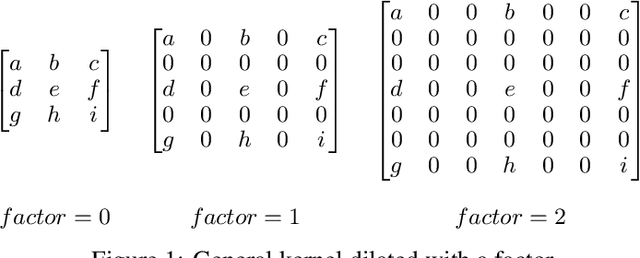

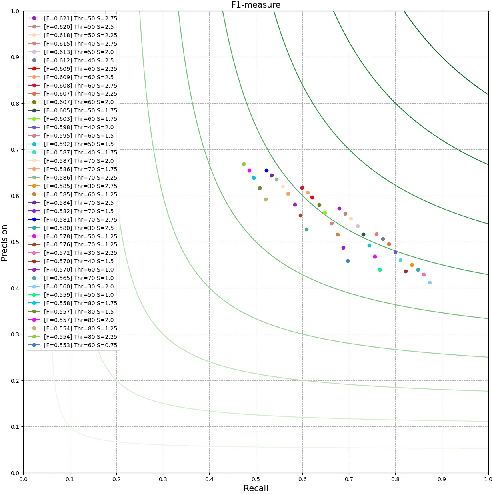
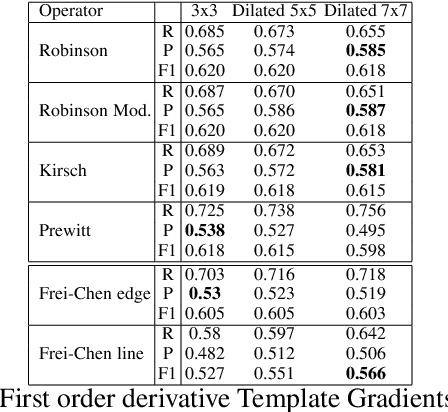
Abstract:Edges are a basic and fundamental feature in image processing, that are used directly or indirectly in huge amount of applications. Inspired by the expansion of image resolution and processing power dilated convolution techniques appeared. Dilated convolution have impressive results in machine learning, we discuss here the idea of dilating the standard filters which are used in edge detection algorithms. In this work we try to put together all our previous and current results by using instead of the classical convolution filters a dilated one. We compare the results of the edge detection algorithms using the proposed dilation filters with original filters or custom variants. Experimental results confirm our statement that dilation of filters have positive impact for edge detection algorithms form simple to rather complex algorithms.
A Novel Edge Detection Operator for Identifying Buildings in Augmented Reality Applications
Jun 02, 2021



Abstract:Augmented Reality is an environment-enhancing technology, widely applied in many domains, such as tourism and culture. One of the major challenges in this field is precise detection and extraction of building information through Computer Vision techniques. Edge detection is one of the building blocks operations for many feature extraction solutions in Computer Vision. AR systems use edge detection for building extraction or for extraction of facade details from buildings. In this paper, we propose a novel filter operator for edge detection that aims to extract building contours or facade features better. The proposed filter gives more weight for finding vertical and horizontal edges that is an important feature for our aim.
Custom Extended Sobel Filters
Sep 30, 2019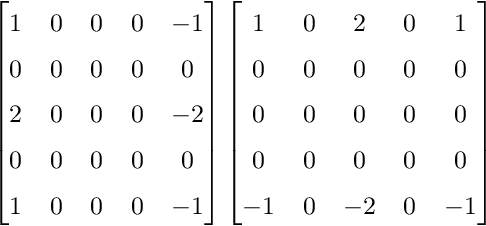


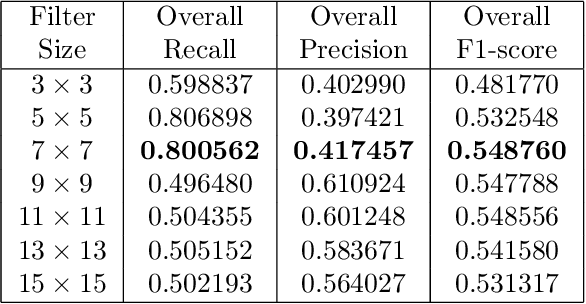
Abstract:Edge detection is widely and fundamental feature used in various algorithms in computer vision to determine the edges in an image. The edge detection algorithm is used to determine the edges in an image which are further used by various algorithms from line detection to machine learning that can determine objects based on their contour. Inspired by new convolution techniques in machine learning we discuss here the idea of extending the standard Sobel kernels, which are used to compute the gradient of an image in order to find its edges. We compare the result of our custom extended filters with the results of the standard Sobel filter and other edge detection filters using different image sets and algorithms. We present statistical results regarding the custom extended Sobel filters improvements.
 Add to Chrome
Add to Chrome Add to Firefox
Add to Firefox Add to Edge
Add to Edge